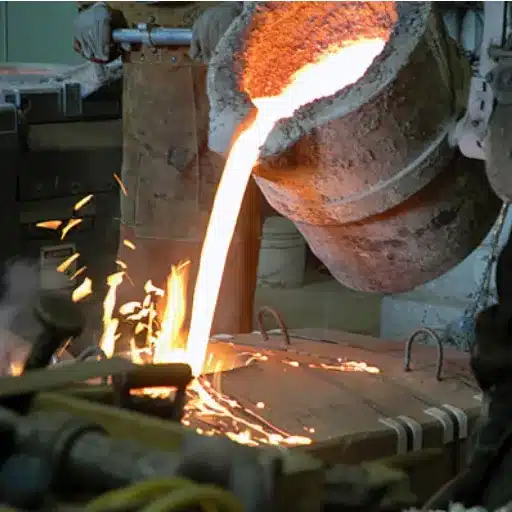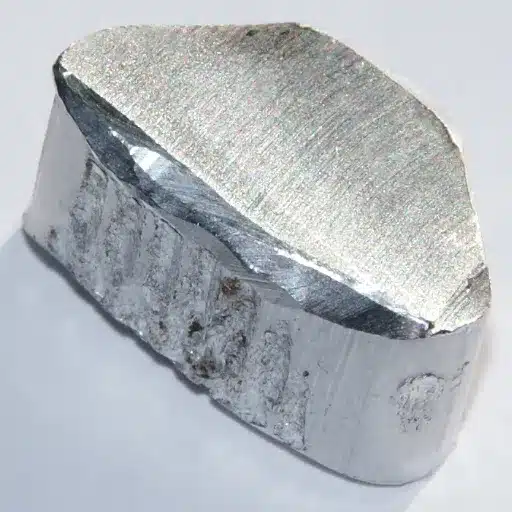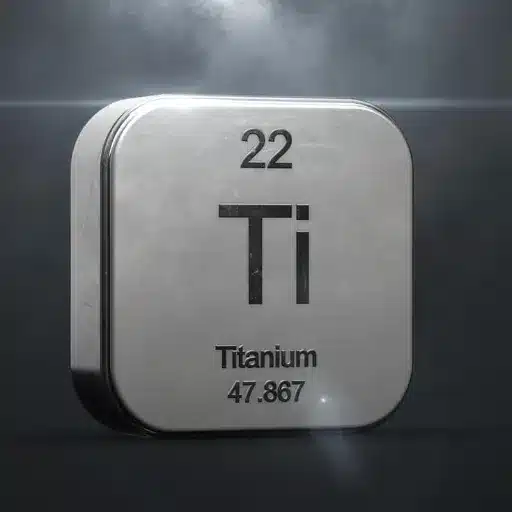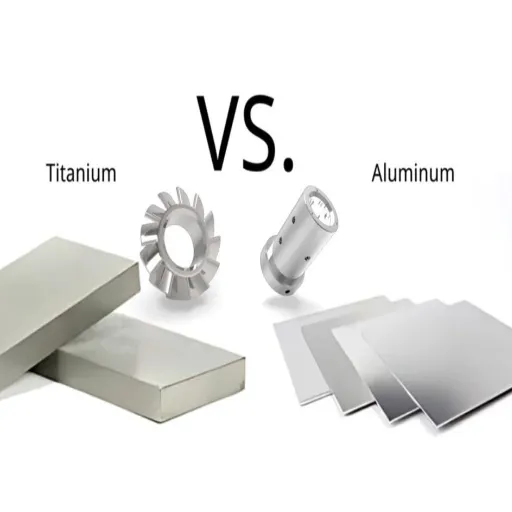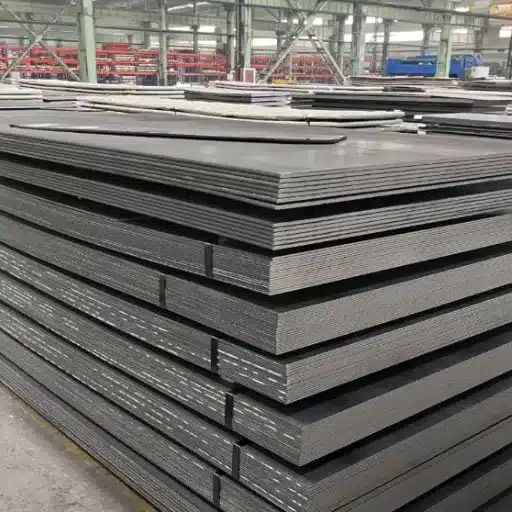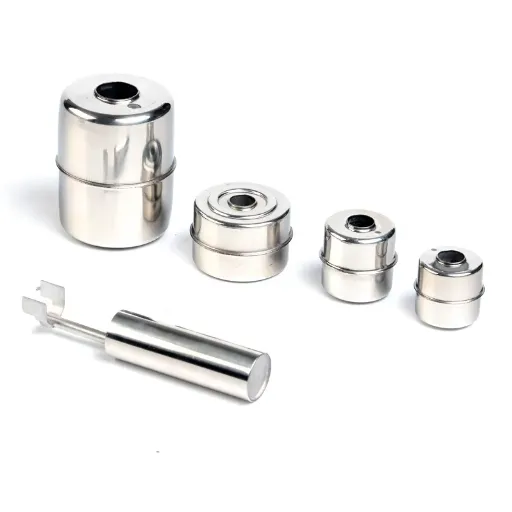Sanitary pipe systems are indispensable to the plumbing industry as they uphold cleanliness standards and ensure proper waste removal in residential, commercial, and industrial areas. Understanding the different kinds of sanitary pipes, their purposes, and their incorporation into plumbing systems is mandatory for both professionals and homeowners.
This comprehensive guide provides a thorough description of sanitary piping systems, exploring different materials, designs, and uses. Whether you’re a contractor seeking best practices or a homeowner taking on a renovation project, this detailed guide will equip you with the knowledge required for making informed choices regarding sanitary plumbing solutions.
Overview of Sanitary Pipes

Sanitary pipes are one of the most important elements in a plumbing system. They are responsible for carrying wastewater from various types of buildings—residential, commercial, or industrial—to sewer systems or treatment plants. They are made of strong materials like PVC, cast iron, or ABS, depending on the property of the material to withstand corrosion, water pressure, and wear over time.
Key Benefits of Proper Sanitary Pipe Installation
- Efficient Drainage: Ensures smooth wastewater flow without backups
- No Leaks: Prevents water damage and contamination
- Hygiene Maintenance: Protects public health through proper waste disposal
- Code Compliance: Meets local building regulations for safety
What are Sanitary Pipes?
Sanitary pipes play an important role in plumbing and infrastructure systems by transferring waste and sewage from houses, factories, or offices to treatment plants or landfills in a safe and efficient way. Recent studies and trends indicate that these pipes are highly durable and resistant to leaks and corrosion, enabling them to survive even the most extreme environmental conditions and lengthy waste materials.
Primary Characteristics
- Durability: Designed to withstand harsh environmental conditions
- Leak Resistance: Prevents contamination and water damage
- Corrosion Resistance: Maintains integrity over extended periods
- Code Compliance: Manufactured to meet local and international building standards
Importance of Sanitary Pipes in Plumbing
Sanitary pipes are essential to plumbing systems because they efficiently handle waste while upholding hygiene standards. Recent studies indicate a significant increase in search interests on topics like “sewer system safety” and “modern plumbing solutions,” showing growing awareness of sanitation infrastructure.
Modern Advancements in Sanitary Pipes
Innovations in materials and technologies like PVC-O (oriented PVC) and HDPE pipes have significantly improved performance by providing:
- Superior chemical resistance
- Lower environmental impact
- Enhanced durability and lifespan
- Reduced installation complexity
Common Materials Used in Sanitary Pipes
| Material | Key Properties | Best Applications |
|---|---|---|
| PVC | Lightweight, inexpensive, corrosion-resistant, chemical-resistant | Residential and industrial sanitation systems |
| PVC-O | Enhanced mechanical strength for high-pressure applications | High-pressure industrial systems |
| HDPE | Flexible, high impact resistance, seamless structure | Underground installations, seismic areas |
| Cast Iron | Extreme strength, sound-proofing characteristics | Commercial buildings, noise-reduction areas |
| Copper | Antimicrobial properties, bacteria prevention | Luxury sanitary installations, hospitals |
| Stainless Steel | Unrivaled strength, corrosion resistance, longevity | Industrial and high-pressure sanitary systems |
Material Selection Factors
The selection of material depends on:
- Cost considerations and budget constraints
- Environmental conditions (temperature, moisture, chemicals)
- Required lifespan and durability needs
- Specific system requirements and pressure ratings
- Technological advancements and changing standards
Main Types of Plumbing Pipes
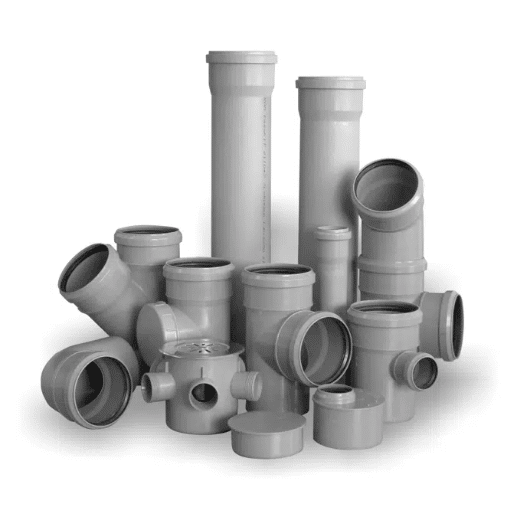
PVC (Polyvinyl Chloride) Pipes
PVC pipes are extensively used in plumbing systems due to their lightweight nature, durability, and cost-effectiveness. These pipes are mainly applied to drainage, waste, and vent systems. Their non-corrosive nature and chemical resistance make them suitable for long-term use in residential and commercial settings.
Key Features:
- Easy installation and maintenance
- Smooth interior surface reduces friction
- Excellent for drainage and vent systems
- Not suitable for high-temperature applications
PEX (Cross-linked Polyethylene) Pipes
PEX pipes have gained popularity in recent years due to their flexibility, making them the material of choice for almost all hot and cold-water supply systems. High resistance to heat and pressure is ensured through the cross-linking of PEX, while the risk of leaks is reduced by having fewer connections.
PEX Advantages:
- Adapts easily to modern plumbing layouts
- Requires fewer fittings and joints
- Resistant to freezing, chemicals, and corrosion
- Quick and easy installation process
Copper Pipes
In plumbing, copper pipes are still considered the benchmark, as their properties ensure longevity and suitability for both hot and cold water applications. These pipes have very long life owing to their high resistance to corrosion and exceptional water pressure control.
✓ Pros
- Extremely long lifespan
- High corrosion resistance
- Excellent pressure handling
- Recyclable and sustainable
- Antimicrobial properties
✗ Cons
- Higher cost compared to alternatives
- Requires professional installation
- Energy-intensive production
- Can be affected by water acidity
CPVC (Chlorinated Polyvinyl Chloride) Pipes
CPVC pipes are designed to handle higher temperatures than standard PVC pipes, making them ideal for hot water distribution. They offer long service life with excellent resistance to corrosion and various pH levels.
Ideal Applications:
- Hot water distribution systems
- Areas with hard water conditions
- Applications with chemical exposure concerns
- Both residential and commercial plumbing
Galvanized Steel Pipes
⚠️ Declining Usage
Though not used as often in new installations, galvanized steel pipes are still found in older systems. While these pipes are strong and durable, they suffer from corrosion over time, leading to buildup that affects both water flow and quality. These pipes are being phased out and replaced by newer, more advanced materials.
HDPE (High-Density Polyethylene) Pipes
HDPE pipes are becoming a distinctive choice as a versatile solution for water distribution and drainage systems. They are suitable for underground installations because their properties make them flexible, lightweight, and resistant to cracking.
Trenchless Technology Applications
HDPE pipes have found major application in trenchless technology due to their capability of being fused seamlessly, ensuring leak-proof connections even in high-pressure scenarios.
Black Iron Pipes
Black iron pipes are mainly used for gas lines but also have a few applications in water supply systems. Their strong and high-pressure-resistant qualities are advantages, though they necessitate regular maintenance to prevent rusting. Due to high susceptibility to corrosion, their use in water transport systems is limited.
PVC Pipes: Comprehensive Analysis
PVC (Polyvinyl Chloride) pipes offer versatility in plumbing and construction applications thanks to their excellent properties and performance characteristics.
Advantages of PVC Pipes
- Corrosion Resistance: Excellent replacement for metal pipes in water supply systems
- Lightweight: Easy to transport and install
- Durability: Life expectancy of 50-100 years under ideal conditions
- Cost-Effective: Low initial cost and minimal long-term maintenance
- Chemical Resistance: Withstands many chemicals effectively
Limitations of PVC Pipes
- Temperature Sensitivity: Low melting point makes them unsuitable for hot water systems
- UV Sensitivity: May lose tensile strength with prolonged UV exposure
- Chemical Limitations: Can be affected by certain aggressive chemicals
- Environmental Concerns: Non-biodegradable, contributes to plastic pollution if improperly disposed
Recent Improvements
The introduction of CPVC (Chlorinated Polyvinyl Chloride) pipes has improved thermal and chemical resistance, expanding PVC applications in residential, commercial, and industrial settings while addressing traditional concerns.
5 Types of Plumbing Pipes Explained
| Pipe Type | Primary Use | Key Characteristics | Best For |
|---|---|---|---|
| PVC | Drainage, waste, venting | Lightweight, corrosion-resistant, smooth interior | Residential drainage systems |
| Copper | Hot & cold water | Long-lasting, high thermal conductivity, recyclable | Premium water supply systems |
| PEX | Water supply (hot & cold) | Flexible, fewer fittings, freeze-resistant | Modern residential plumbing |
| Galvanized Steel | Legacy installations | Strong but prone to rust and corrosion | Industrial applications (limited) |
| CPVC | Hot water distribution | Heat-resistant, corrosion-resistant, affordable | Hot water systems, hard water areas |
Choosing the Right Size of Sanitary Pipes
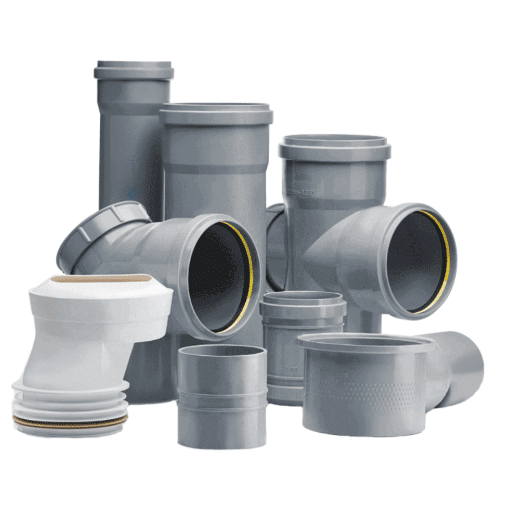
The process of choosing the right size for sanitary pipes involves considering system requirements, flow rates, and industry standards. Pipe sizes are usually determined based on maximum anticipated flow demand, expressed in gallons per minute (GPM) or liters per second, computed using sophisticated hydraulic formulas or software tools.
Standard Residential Pipe Sizes
Common Diameter Ranges:
- 1/2″ – 4″ for residential plumbing
- Smaller pipes (1/2″ – 3/4″) for fixture connections (sinks, toilets)
- Larger pipes (3″ – 4″) for main drainage or sewage systems
Fixture-Based Sizing
| Fixture Type | Recommended Drain Pipe Size | Flow Consideration |
|---|---|---|
| Lavatory Sink | 1-1/4″ | Standard flow rate |
| Kitchen Sink | 1-1/2″ | Moderate flow with food particles |
| Toilet | 3″ minimum | Heavy flow with solid waste |
| Shower/Bathtub | 2″ | High volume water flow |
| Main Sewer Line | 4″ | Combined household waste |
⚠️ Sizing Considerations
Oversizing: Results in extra costs and decreased system efficiency
Undersizing: Leads to blockages and poor drainage
Solution: Always consult manufacturer specifications and regional plumbing codes for warranty compliance
Factors Influencing Pipe Size
- Flow Rate Requirements: Determined by plumbing fixtures and devices connected to the system
- Water Pressure: Higher pressure systems may require different sizing
- Pipe Material Type: Different materials have varying flow characteristics
- Distance of Pipe Run: Longer runs typically require larger diameters to maintain flow
- Local Plumbing Regulations: Minimum sizes based on building purpose and type
- Simultaneous Usage: Multiple fixtures operating concurrently during peak hours
💡 Professional Insight
Proper pipe sizing can prevent problems such as water hammer, slow drainage, and pressure loss in large systems. Technical knowledge combined with manufacturer recommendations and code compliance ensures cost-effective, long-lasting, and functional water supply systems.
How to Measure Pipe Size Properly
Accurate measurement of pipe size should include consideration of the inner diameter (ID), outer diameter (OD), and wall thickness. Start by understanding the pipe classification—whether it’s nominal pipe size (NPS) or actual outside diameter measurement (for tubing).
Measurement Steps
- Identify Classification: NPS focuses on inner diameter; tubing usually refers to outer diameter
- Use Proper Tools: Caliper or measuring tape for exact dimensions
- Record Precisely: Note measurements in fractions of an inch or millimeters
- Consult Charts: Match measured values to standardized pipe size charts
- Check Pipe Schedule: Indicates wall thickness for proper sizing
Modern Measurement Tools
Recent trends show growing interest in:
- Online Pipe Size Charts: Standardized reference tools
- AR Measurement Apps: Augmented reality for visual measurements
- Professional-Sized Calculators: Digital tools for accurate determinations
Installing Sanitary Pipes in Your Home
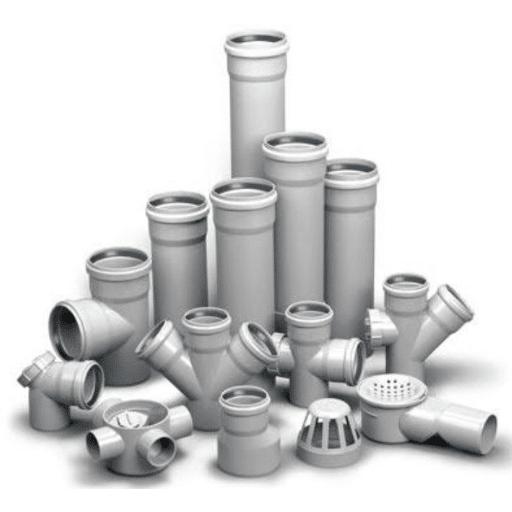
When sanitary pipeline is installed in a house, the selection of material and size of the pipe are crucial for regulatory compliance and performance efficiency. Based on recent data and user questions, PVC and ABS are the two most commonly used materials for residential plumbing systems.
Material Selection for Installation
PVC (Polyvinyl Chloride)
- Cost-effective solution
- Long-lasting durability
- Excellent rust resistance
- Wide availability
ABS (Acrylonitrile Butadiene Styrene)
- Higher impact resistance
- Larger temperature tolerance
- Excellent for harsh conditions
- Easier cold-weather installation
Determining Pipe Dimensions
Pipe sizing relates to understanding waste flow rates and fixture unit calculations:
| Application | Minimum Pipe Diameter | Purpose |
|---|---|---|
| Standard Toilet | 3 inches | Effective solid waste disposal |
| Bathroom Sinks | 1-1/4 to 1-1/2 inches | Liquid waste drainage |
| Kitchen Sinks | 1-1/2 inches | Food particles and grease drainage |
| Main Sewer Line | 4 inches | Combined household waste flow |
⚠️ Local Building Code Compliance
Larger houses or those with more water fixtures might need larger pipes to handle greater flows. Always check local building codes, as they set minimum sanitary pipe installation requirements that ensure both efficiency and legal compliance.
Plumbing System Layout
A thoughtfully designed plumbing system layout operates with utility, ease, and legal compliance. One of the most asked questions is what method to adopt for choosing pipe sizes for residential or commercial properties.
Main Sewer Line Specifications
Standard Single-Family Home:
- 4-inch diameter main sewer line
- Adequate for most residential applications
- Can serve up to 500 fixture units per International Plumbing Code (IPC)
Branch Drain Requirements
| Fixture | Minimum Branch Drain Size | Notes |
|---|---|---|
| Toilets | 3 inches | Minimum requirement for solid waste |
| Sinks | 1-1/2 to 2 inches | Based on system demand |
| Showers | 2 inches | Adequate for water volume |
| Bathtubs | 1-1/2 to 2 inches | Depends on tub size and flow |
Modern Layout Considerations
💡 Efficiency Tips from Engineers
- Centralized “Wet Walls”: Place fixtures in centralized locations to minimize total piping length
- Material Selection: PVC or ABS pipes preferred for durability, low-cost, and rust resistance
- Venting Systems: Essential to keep air pressure constant and prevent siphoning or blocking
- Flow Rate Optimization: Proper layout increases flow rates and system efficiency
⚠️ Critical Reminder
Always check local codes and regulations in advance to ensure compliance and system effectiveness. Regional requirements may vary significantly.
Essential Fittings for Sanitary Pipes
The selection of suitable fittings is the most important step when designing or upgrading a sanitary piping system to ensure efficient operation, safety, and regulatory compliance.
Primary Fitting Types
| Fitting Type | Function | Primary Use |
|---|---|---|
| Elbows | Reroute flow at various angles | Navigating corners and directional changes |
| Tees | Join branches to main line | Distributing or collecting flow efficiently |
| Reducers | Change pipe diameters | Maintaining consistent pressure and flow |
| Couplings | Join pipes together | Creating leak-free connections |
| Wyes | 45-degree branch connections | Smooth flow transitions in drainage |
| Caps | Close pipe ends | Terminal points and future expansion |
Modern Fitting Innovations
According to recent reports and online data, state-of-the-art fittings offer significant advantages:
- Built-in Sealing Systems: Dramatically increase lifespan and leak resistance
- Flexible Fittings: Advantageous in seismic-prone areas, allowing movement without losing integrity
- Push-Fit Technology: Simplifies installation without specialized tools
Common Installation Mistakes to Avoid
During installation of piping systems, many typical mistakes can bring about long-term inefficiencies, premature failures, or safety problems. Industry insights and search trends have identified the most common errors:
⚠️ Critical Installation Errors
1. Poor Joint Assembly
- Overtightening: Destroys sealing components
- Insufficient Tightening: Allows water or gas leaks
- Solution: Follow manufacturer torque specifications
2. Thermal Expansion Neglect
- Problem: Not accounting for thermal expansion and contraction
- Consequence: System strain, breaks, or faults
- Solution: Include flexible joints or compensators
3. Improper Alignment
- Issue: Misalignment during installation
- Impact: Reduced system strength, especially in high-pressure applications
- Solution: Use alignment tools and verify measurements
4. Inadequate Testing
- Risk: Skipping comprehensive post-installation testing
- Danger: Unnoticed leaks or weaknesses
- Solution: Conduct thorough pressure tests before operation
Installation Best Practices
- Always follow manufacturer specifications and standards
- Use proper tools for each connection type
- Account for environmental factors (temperature, humidity)
- Conduct comprehensive pressure testing
- Document installation procedures for future reference
- Ensure proper support and bracketing
- Verify code compliance before completion
Maintenance of Sanitary Pipes
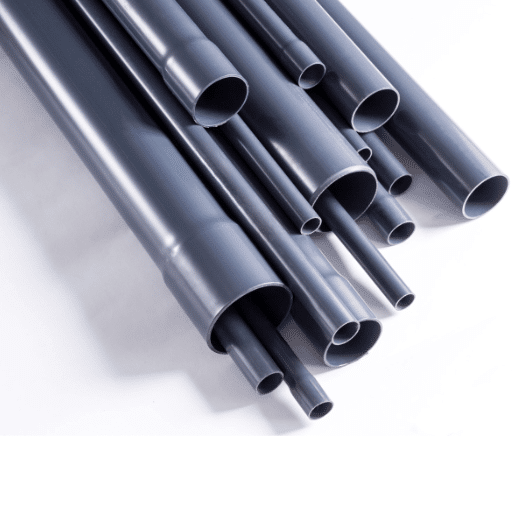
Proper care of sanitary pipes is crucial to keep them working safely and efficiently for long periods, especially in both residential and industrial use. Recent search trends show increasing interest in understanding the importance of regular inspections to eliminate risks of blockages, deterioration, and water system contamination.
Regular Inspection Tips
Weekly Visual Inspections
Maintenance studies reveal that failure rates can decrease by up to 20% with weekly inspections, enabling early intervention before minor issues worsen.
Inspection Schedule
- Weekly: Conduct visual inspections for signs of wear, corrosion, or damage
- Monthly: Monitor pressure levels consistently for unusual fluctuations
- Quarterly: Review all pipe fittings and joints for loosening or stress fractures
- Biannually: Test for material degradation, especially in corrosive environments
- Annually: Utilize ultrasonic testing to measure wall thickness and find internal defects
Advanced Diagnostic Methods
| Method | Capability | Detection Rate |
|---|---|---|
| Video Pipeline Inspection | Visual identification of blockages and damage | 85-95% accuracy |
| Ultrasonic Testing | Measures wall thickness, finds internal defects | 90% of internal issues in early phases |
| Pressure Monitoring Systems | Detects blockages or leaks through pressure changes | Real-time detection |
Benefits of Consistent Monitoring
- Pressure Level Monitoring: Adds approximately 15% more years to pipe lifespan
- Joint Inspection: Prevents 35% of industrial breakdowns caused by pipe-related issues
- Early Material Degradation Detection: Key to preventing costly repairs or system replacement
Signs of Pipe Damage
⚠️ Critical Warning Signs
- Visible Corrosion: Indicates exposure to harsh environmental conditions or chemical interactions
- Leaks or Water Loss: Even small leaks are definite signs of damage
- Irregular Pressure Readings: May indicate blockages, cracks, or joint failures
- Discolored Water: Signifies internal corrosion or contamination
- Unusual Sounds: Gurgling or rattling may indicate air pockets or loose fittings
- Slow Drainage: Often indicates partial blockages forming
💡 Popular Search Insight
Recent statistics reveal that “how to detect pipe blockages” is one of the most common searches, highlighting the significance of monitoring pressure fluctuations as a diagnostic tool.
Best Practices for Long-lasting Sanitary Pipes
A combination of proactive measures, informed by the latest data insights, is highly recommended to ensure prolonged functionality and efficiency of sanitary pipes.
Proactive Maintenance Strategies
1. Regular Pressure Monitoring
A sudden drop or rise in pressure can indicate blockages or leaks. Install monitoring systems for continuous oversight.
2. Preventative Flushing
Periodically flush pipes to remove sediment buildup and prevent blockages from forming.
3. Quality Material Selection
Use high-quality, corrosion-resistant materials such as stainless steel or PVC to reduce deterioration risk.
4. Smart Sensor Integration
Incorporate advanced tools like smart sensors for real-time condition monitoring, enabling immediate detection of irregularities like leaks or contamination.
5. User Education
Educate system users on proper usage, such as not disposing of improper waste, which reinforces technical measures.
Eco-Friendly Cleaning Methods
Environmentally Conscious Approaches
Search data indicates rising interest in eco-friendly pipe cleaning methods:
- Enzymatic Cleaners: Biological solutions that break down organic matter
- High-Pressure Water Jetting: Effective mechanical cleaning without chemicals
- Benefits: Reduces chemical usage while remaining effective and complying with modern environmental practices
💡 Long-term Success Formula
By applying these best practices along with smart technologies and a data-driven approach to pipe management, sanitary systems can attain maximum performance and longer operational lifespans. Following manufacturer cleaning schedules combined with modern maintenance strategies will maximize pipe longevity and system operating performance.
Standard Sizes for Home Plumbing
The diameters of home plumbing pipes under standard sizes depend on their functions within the system. Understanding these standards is essential for proper installation and maintenance.
Water Supply Lines
| Application | Standard Size | Purpose |
|---|---|---|
| Main Supply Lines | 3/4 inch | Maintains good water pressure throughout residential systems |
| Branch Lines | 1/2 inch | Individual fixture connections |
| Appliance Connections | 3/8 to 1/2 inch | Washing machines, dishwashers |
Drainage System Sizes
| System Component | Pipe Diameter | Function |
|---|---|---|
| Main Drain | 4 inches | Handles combined household wastewater |
| Secondary Drains | 2 inches | Multiple fixture drainage |
| Individual Fixtures | 1-1/2 inches | Single sink or shower drainage |
Modern Appliance Compatibility
Recent data compiled with search analytics show that queries regarding pipe sizing focus primarily on understanding compatibility with modern appliances and fixtures:
- Newer Washing Machines/Dishwashers: Usually require 3/8-inch or 1/2-inch supply pipes
- Hot Water Systems: 3/4-inch pipes frequently recommended for good balance between flow rate and heat retention
- Energy Efficiency: Proper pipe sizing improves energy efficiency, especially in hot water distribution
References
-
Oklahoma State University Extension: Discusses sanitary fittings and tubing, focusing on materials like stainless steel and their advantages. Read the article.
-
Illinois Mathematics and Science Academy (IMSA): Provides detailed guidelines on sanitary waste and vent piping, including slope requirements and venting. Access the document.
-
Northwestern University Facilities: Offers design guidelines for sanitary waste piping specialties, referencing standards like ASME A112.1.2. View the guidelines.
Frequently Asked Questions (FAQ)
What are the main types of sanitary pipes used in plumbing systems?
In the plumbing systems, the principal sanitary pipe types that are usually used are PVC, PEX, cast iron, and ABS pipes. PVC pipes are widely erected because of their low-cost plastic composition and good inner layer, thus water supply lines are the best area for their installation. PEX pipes, in contrast, have the advantage of being flexible during installation and are the best choice for corners and difficult spaces. Cast iron pipes were very common in houses built during the early 20th century; however, they are long-lasting, still, at some point, they will inevitably start rusting and corroding.
How do PVC plumbing pipes compare to PEX pipes?
PVC plumbing pipes are hard and are mainly applied in the case of the water supply line, in contrast, PEX pipes are soft and bendable able to go round corners and not obstruct the way, thus they fit new construction areas where provision for plumbing is not so wide. PVC is able to deal with high water pressure and is impervious to chemicals though it, being the opposite of PEX, can’t cope with cold temperatures as it might break down getting fragile. The two materials have got the green light from the national standards institute, but it all comes down to determining the specific plumbing requirements of your dwelling to make your choice.
What are the uses of sanitary pipes in a home’s plumbing system?
Sanitary pipes play a major role in the relocation of sewage from the different fixtures within your house including sinks, showers, and toilets. They are capable of effectively managing the removal and replacement of waste and are hence part of water distribution system commonly found in the homes of today. Moreover, they act as a barrier to prevent sewer backflow and also guarantee proper drainage, thus, they take part in maintaining a good plumbing system.
Can PVC and PEX pipes be used for the main water supply?
Certainly, the use of PVC pipes and PEX pipes for the main water supply in the plumbing systems of residences is a very common practice. The capability of PVC pipes in dealing with high water pressure makes them the prime candidate for water supply lines. PEX also has the advantage of being a reliable source of water where even flexibility and resistance to freezing can be a requirement. That said, the most important thing is that the pipes you choose meet local plumbing codes and national standards.
What factors should be considered when choosing plumbing pipes for your home?
The selection of plumbing pipes for your home should take into account factors such as pipe material, intended use, local building codes, and the plumbing system layout. For example, the use of PEX pipes might be the best option if your house gets icy in winter because they can expand and contract without breaking. Besides, consider the pipe’s high water pressure resistance, its rust and corrosion resistance and the overall cost-effectiveness.
What are the risks of using cast iron plumbing in modern homes?
Due to thier long-lasting nature, cast iron pipes provided a reliable plumbing system in the early twentieth-century homes, yet they are now viewed as a liability. Over the years, rust and corrosion can eat through cast iron and eventually cause leaks, which in turn lead to water damage. Heavy and thick, they are not easy to work with during installation or replacement; changeover from PVC or PEX will be much simpler. If cast iron pipes are part of the plumbing, homeowners would face the costs of both removal and replacement.
How do sewer pipes differ from sanitary pipes?
Although sewer pipes and sanitary pipes are a part of the same plumbing line, they serve different purposes. While sanitary pipes are installed to take the dirty water from sink, toilet etc. to the main sewer line, sewer pipes take waste away from the building to the places of treatment. On the other hand, sanitary pipes will have to withstand smaller volumes than sewer pipes, which are oftentimes underground also. Proper drainage and certain governmental regulations prevent drinking water contamination for both types of piping.
What should be done if plumbing pipes for your home are leaking?
In the event that you find out leaking plumbing pipes in your house, it is really important to treat the problem as an emergency and act in a timely manner to avoid water damage. Stop the flow of water by switching off the main water supply first. After that, find out where the leakage is starting from and try to identify the type of the pipe. Depending on how bad the leak is, you might be able to temporarily fix it with pipe repair clamps. Nevertheless, if you want a permanent solution do not hesitate to call in a licensed plumber who will take care of the damaged area by the process of removal and replacement.

